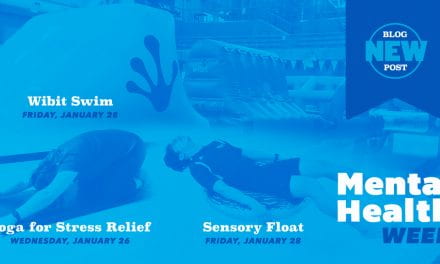If anxiety and stress are getting the better of you, you might want to grab a mat and give yoga a try. Yoga is a mind-body practice that combines physical poses with controlled breathing and relaxation. Yoga uses a series of postures and breathing techniques to build a better connection to self.
poses with controlled breathing and relaxation. Yoga uses a series of postures and breathing techniques to build a better connection to self.
The benefits of yoga include decreased stress and tension, increased strength and balance, increased flexibility and range of motion, lowered blood pressure, lowered heart rate and reduced cortisol levels. It can also enhance your mood and overall sense of well-being.
Yoga differs from other exercises because of the mindful aspect of the practice. Staying in the present moment is an important aspect of yoga. When you’re stuck in the past or worrying about the future, you quite often miss out on what is in front of you. Practicing yoga helps us to remember to bring our awareness back to our breath and our bodies allowing us to live in the present moment. Yoga is about looking inward instead of outward and listening to our own bodies.
People tend to hold a lot of their stress and tension in their shoulders and hips. Thinking about sending our breath to those areas where we are holding our tension often helps us to feel more relaxed and grounded. By working with the rhythm of our own breath, we can address the ways stress is held in our body.
When you are ready, find a comfortable place to either sit or lie down. Notice where you are connected to the floor. If you are sitting, it might be your feet. If you are lying down, notice which parts of your body are connected to the floor. Take a moment and investigate how you are connected to the floor beneath you. Take a few breaths here, breathing in and out through your nose. Breathing through your nose rather than your mouth allows the air to become warm and moist as it enters your body. If you want, you may wish to take longer in breaths and longer out breaths. Gradually slowing down your breath should lead to a decreased heart rate and lower blood pressure allowing you to feel more relaxed, calm and in control. Give yourself a minute or two to just breathe.
Not all yoga poses are created equal. Some poses are more relaxing, while others are more energizing. Seated postures like child’s pose can induce feelings of calm which can help quiet the mind and reduce stress. Positions like eagle pose and standing forward bend can calm the mind while also energizing the body. The bridge pose provides a gentle back stretch while alleviating stress and tension. This pose can help to reduce fatigue, backaches and headaches.
Most yoga practices end with Shavasana. This pose emphasizes total relaxation and a state of deep rest that slows the breathing and lowers the blood pressure while quieting the nervous system.
MacEwan University Sport and Wellness offers yoga and Pilates classes to help reduce your daily stress. Why not give one of them a try? Alternatively, please feel free to or talk to one of our certified trainers to learn more about this type of workout.
by Cindy Hunt
Cindy Hunt is certified with the Canadian Society for Exercise Physiologists as a Certified Personal Trainer. She has a Bachelor of Arts degree and graduated with Honours from the NAIT Personal Fitness Training Program. She holds numerous group fitness certifications. Her passion lies in motivating others to get active and pursue a healthy lifestyle. She has worked with athletes, dancers, aquafit participants, pre and post-natal woman, older populations and anyone who is looking to reach their fitness goals.


